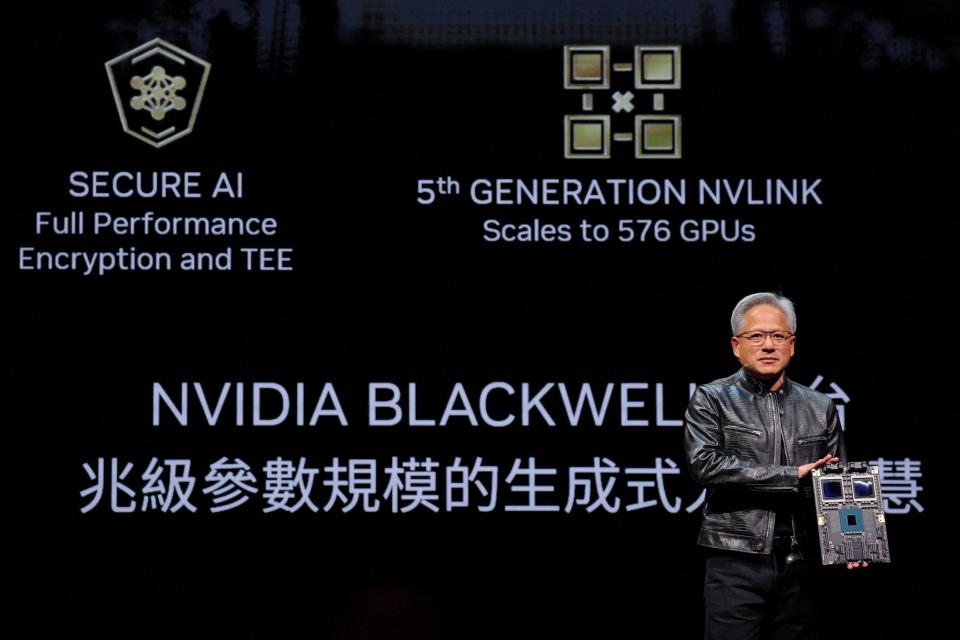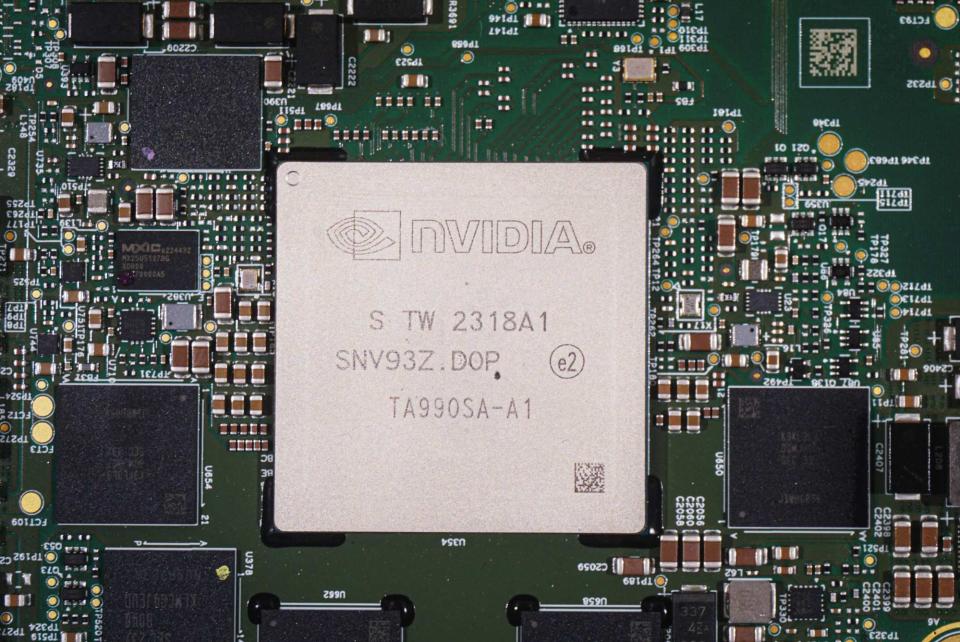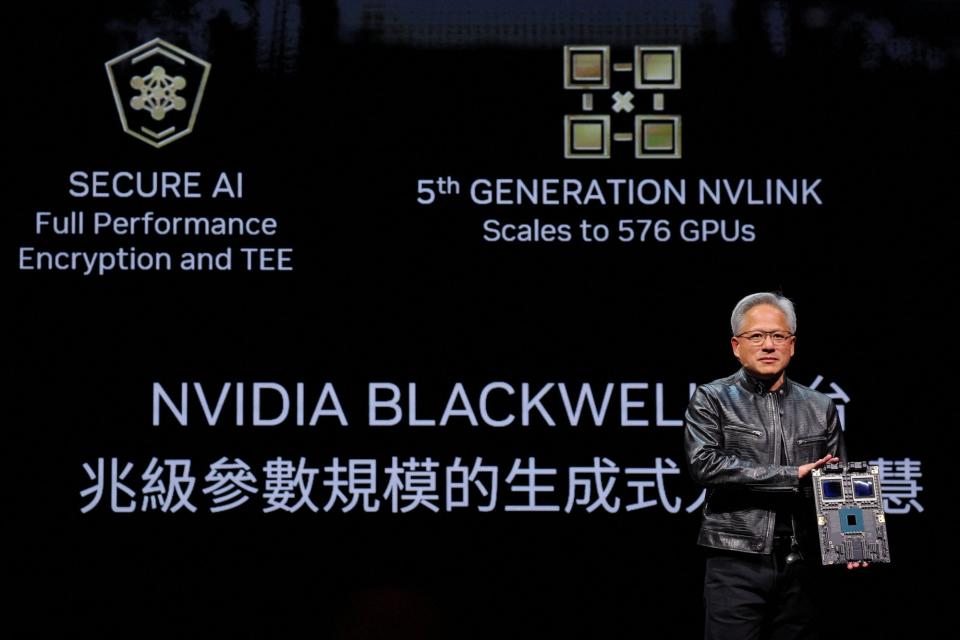Nvidia has not finalised the delivery time for its latest chip designed to comply with Washington’s export restrictions for China amid a potential escalation of sanctions that could derail roll-out plans, industry sources said.
The California-based chip giant has developed the B20 for Chinese customers, which is a downgraded version of its most powerful Blackwell B200 graphics processing unit (GPU) launched in March, according to two sources, including one person with direct knowledge of the matter.
Nvidia originally planned to start shipping the new chip in the fourth quarter, but that timeline may no longer be realistic as new concerns have risen that an expansion of export controls reportedly being considered by Washington could affect the product, one of the sources said, along with another person familiar with the matter.
Do you have questions about the biggest topics and trends from around the world? Get the answers with SCMP Knowledge, our new platform of curated content with explainers, FAQs, analyses and infographics brought to you by our award-winning team.
Nvidia declined to comment on Wednesday. Reuters first reported Nvidia’s new chip.

Nvidia CEO Jensen Huang present the Blackwell platform at an event ahead of Computex in Taipei, Taiwan, June 2, 2024. Photo: Reuters alt=Nvidia CEO Jensen Huang present the Blackwell platform at an event ahead of Computex in Taipei, Taiwan, June 2, 2024. Photo: Reuters>
Despite compromised computing capabilities, the B20 will compensate with improved interconnection bandwidth, which allows binding multiple cards together to make up for the lower computing power of a single GPU, according to the people.
Nvidia, for which China was the third-largest market in the financial year ended January 28, is one of the most prominent tech firms bearing the brunt of increasingly stringent US sanctions on China’s access to advanced semiconductors. Nvidia was barred from selling its A100 and H100 GPUs – two of the most in-demand chips for training and running artificial intelligence (AI) models – to China in August 2022. It later modified those chips to create the A800 and H800 to get around those restrictions, but they were also barred from export to China last October.
US Secretary of Commerce Gina Raimondo warned chip companies last year to stop trying to design around export rules, saying she would control the new chips “the very next day”.
Nvidia, however, has come under increasing competitive pressure in China from domestic chip makers enjoying a government push for technological self reliance, such as Huawei Technologies. This has led Nvidia to develop the H20, L20 and L2 GPUs in a fight to maintain its market share in the country.
Demand for those chips was initially tepid, but sales of the H20 – the most powerful of the batch – have grown in recent months. While some companies continue to buy smaller quantities of Nvidia’s more powerful GPUs on the black market, buying officially available chips gives them access to critical maintenance services needed for long-term support, according to the sources, who have met with Chinese Nvidia clients.

A Nvidia chip is displayed at the Mobile World Congress (MWC) in Shanghai, June 26, 2024. Photo: AFP alt=A Nvidia chip is displayed at the Mobile World Congress (MWC) in Shanghai, June 26, 2024. Photo: AFP>
Nvidia is expected to deliver more than 1 million H20 GPUs in China this year, racking up US$12 billion in sales, according to research firm SemiAnalysis. Dylan Patel, chief analyst at SemiAnalysis, said Nvidia’s H20 still offers better performance than Huawei’s 910B, the Chinese tech giant’s leading AI chip.
The B200, Nvidia’s latest computing platform for AI workloads, offers computing power of up to 20 petaflops from 208 billion transistors. The Blackwell platform, including the B100, B200 and GB200 superchip, is expected to see production ramp up in the fourth quarter, while still accounting for less than 10 per cent of the total high-end GPU market, research firm TrendForce estimates.
Nvidia is also planning to launch a server called GB20 for the China market, according to a report from US tech news outlet The Information, citing unnamed sources. Apart from incorporating several B20 chips, the GB20 server includes central processing units (CPUs). The design is similar to that of the GB200-based server, which combines many B200 chips and its Arm-based Grace CPUs.
This article originally appeared in the South China Morning Post (SCMP), the most authoritative voice reporting on China and Asia for more than a century. For more SCMP stories, please explore the SCMP app or visit the SCMP’s Facebook and Twitter pages. Copyright © 2024 South China Morning Post Publishers Ltd. All rights reserved.
Copyright (c) 2024. South China Morning Post Publishers Ltd. All rights reserved.









